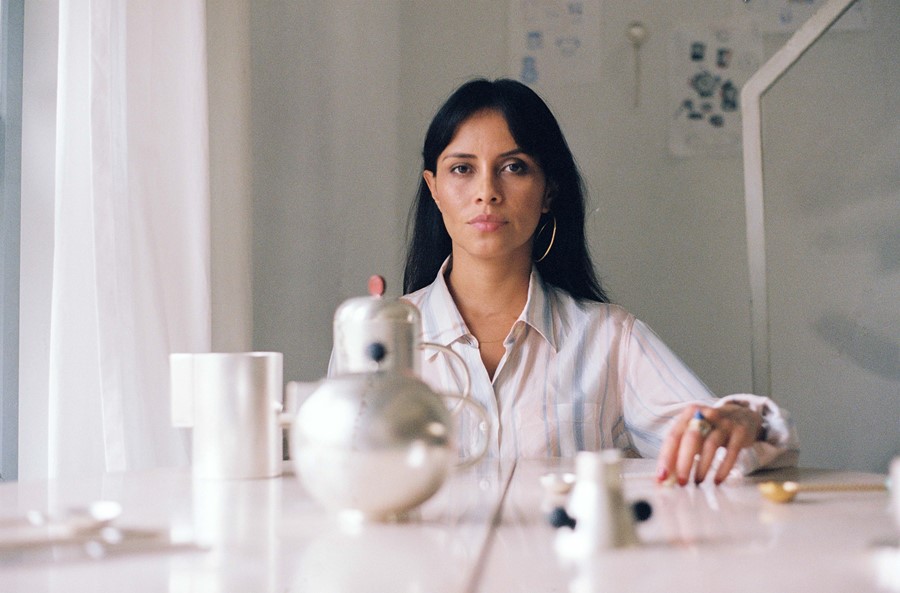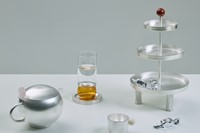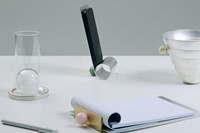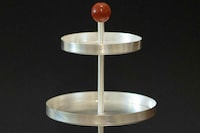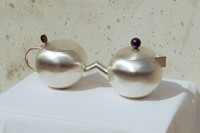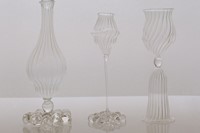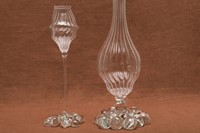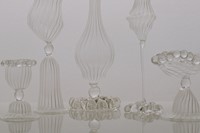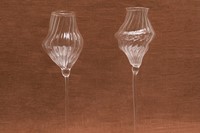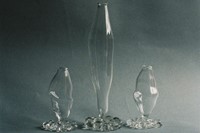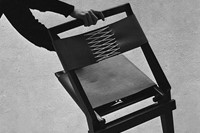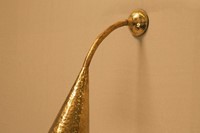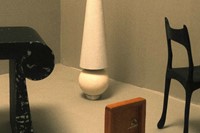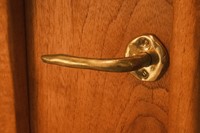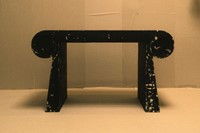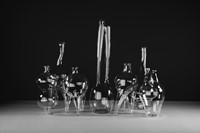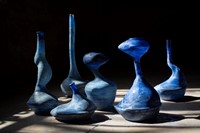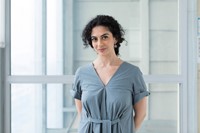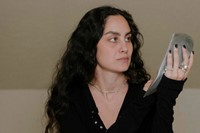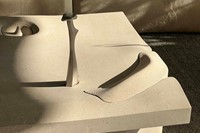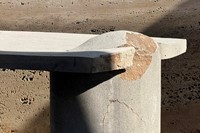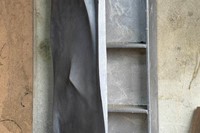As Matter and Shape opens in Paris, five women artists and curators from the fair talk us through their unique practices
The world of design is changing, and with it, a new design salon is taking over Paris for the second time during fashion week. Matter and Shape is not your typical fair – it’s an invitation to explore the landscape of design at the intersection of craft, creativity and commerce. Launched by Dan Thawley and Matthieu Pinet last year, the new salon – held in the Jardin des Tuileries – challenges the concept of what design, art and fashion events can be today. The ephemeral pavilions, with their silver mirrored facades, welcome over 60 exhibitors from around the globe, from Ukraine to Japan, with renowned brands like Danish allrounder Frama and furniture icon Vitra to emerging talents like Teget and NM3.
Establishing a dialogue between tradition and innovation, the second edition of the fair pays homage to the 1925 Exposition Internationale des Arts Décoratifs et Industriels Modernes in Paris, a pivotal moment in design history. 100 years later, the city turns into a progressive art hub again, dedicated to projects and ideas that blend contemporary design thinking with craftsmanship, design talks and architectural references throughout.
Below, five artists and curators from this year’s Matter and Shape talk about their work, functionality, and creating despite challenging conditions.
Natalia Criado
With her playful and pragmatic take on objects, Natalia Criado creates jewellery for the table. “It’s a mature way of representing my inner child,” says the Milan-based artist, who is known for her one-of-a-kind sculptural metalwork, connecting contemporary design with craftsmanship. Drawing inspiration from the heritage of pre-Columbian forms and archaic art, Criado has a strong desire to rescue some of the cultures and beliefs of her homeland with the help of local artisans whilst embodying a modern design ethos. Her work is a portrait of an emotion, a certain kind of energy, adding artistic character to everyday settings.
For Matter and Shape, she introduces her new collection, Escritorio, which makes sitting in the office and procrastinating fun again. The pieces include, but are not limited to, a phone holder, office cups, and a paperweight, designed to inspire and elevate the daily office grind and be more present – something Criado progressively values in today’s world. “I wanted to offer accessories that can make job meeting moments around a working table more pleasant, using the same playful stylistic language I use in my past collections,” she adds, referring to her signature geometrical shapes.
Justine Menard
“My pieces are alive,” says Justine Menard, who explores glass as a medium for artistic expression. Each of them is like poetry, as significant and fragile as the material itself. She wants people to connect and look inside themselves when experiencing her art, ultimately creating “a network of feelings.” Based between Paris and Barcelona, her search for purity and magic is inspired by soft and feminine shapes growing into mouth-blown jewellery, objects, brooches and tableware.
“Whenever I have an idea, it’s not necessarily going to work out,” says Menard about her way of doing things. For her, everything can be functional – you just have to shift perspective. “In my creative process, I like to explore and see how an object can fit into society,” she explains, referring to her ethereal artworks as sculptures before offering their vision of usefulness. Fascinated by the way glass transforms itself, the French artist learned that imperfection is essential, not only to her work, and discipline is the highest form of reward. “Every time I work on the same piece, it’s going to be unlike the other,” she continues. “In the end, it’s about life. Every day is the same but different.”
Aalvo Gallery
“To be exceptional, a piece of furniture must go beyond functionality,” says Lola Maria Tulle, founder of Brazilian Aalvo Gallery. The experimental space elevates design as an art form and is always on the hunt for pieces that challenge conventions. Each of them is a sculpture, recognised primarily for its inherent artistic quality. “I’m drawn to pieces that don’t just occupy space but transform it,” she says of her deep appreciation for works where the material itself is a part of the story. “Beyond aesthetics, I’m also interested in artists who aren’t just making objects for everyday use but questioning the very act of creation.”
When it comes to Brazil’s design scene, Tulle refers to the country’s ability to turn adversity into unique creations. “Without the same educational and cultural access as developed countries, Brazil compensates with creativity and an intuitive approach,” she states. Whilst good taste is not always about what is considered beautiful, the young curator believes there’s a taste for everything: “It’s not something frivolous, but rather a form of functional art that is capable of conveying a personal vision without blindly following trends. When found, it becomes timeless – not easily defined or replicated.”
Hollow Forms
Glassblowing in Palestine has been around for over a thousand years. Hollow Forms wants to reveal the hidden history of the material in the region. “The irony is that while it’s been romanticised as a biblical craft, the actual people making it today are barely surviving under occupation,” says Dima Srouji, architect, visual artist and founder of Hollow Forms, a deeply personal project that collaborates with Palestinian glassblowers to not only sustain but also push forward the tradition. “It’s not about preservation for the sake of nostalgia,” she continues, “but about making work that keeps the craft alive in contemporary conversations.”
Even though glassblowing is an ancient practice, it’s the material that transcends time and space, which makes the pieces feel modern. “The way the glass dances today is very similar to how it did during the Roman Empire and before,” says Srouji, who is interested in the idea of the object of trauma and the trauma of objects. “A broken vessel, a displaced artefact, a fragment of architecture – these are witnesses to violence, displacement and loss,” she elaborates. “But I also see them as sites of healing, which isn’t about erasing trauma but about transforming it.”
Shaha Raphael
For Shaha Raphael, making is a way to deal with everything around her. It’s what keeps her in flow. Driven by a fascination with materials, the Beirut-based maker blends architecture and craft into curious objects and spaces. “They will always tell me what they want to become and not the other way around,” she explains her creative process, which combines digital precision with artisanal expertise. “I really believe in the power of objects.” Mistakes are not part of her design vocabulary. Instead, she sees them as chance encounters and curious gestures.
At Matter and Shape, the Lebanese maker and architect shows her work, surface tension, which is all about creating with tension, as a driving force and in the context of material. “The country is a huge workshop,” Raphael says about Lebanon, a melting pot of a lot of different communities that are purely artisans. “I was here when the war started in Beirut in September 2024, and it was very real and paralysing. I called up the people who I’m working with, and they would tell me until they come and get us from our workshop, we’re not moving. It’s a crazy duality. For them, as much as it was for me, a way to cope with things.”
Matter and Shape will take place in Paris from 7– 10 March 2025 in the Jardin des Tuileries.
